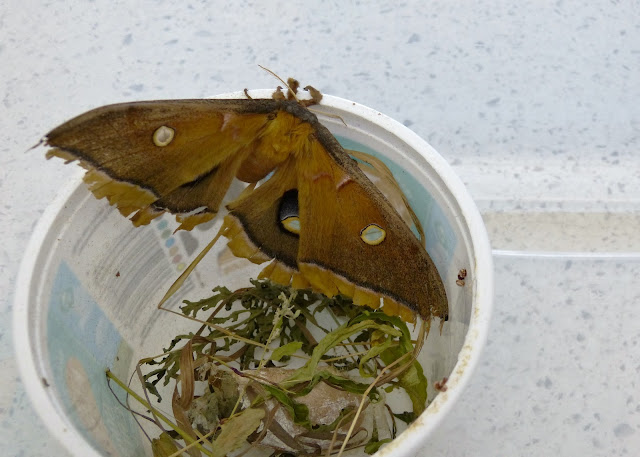Eulogy for a Wayward Beauty
As a sorry turn of events, the polyphemus moth who had been fostered at the Museum as of late finally expired. She had emerged from her silky cocoon shelter last week, having begun her overwintering process just a few months ago. Her adult life had only lasted a fraction of that. But time doesn't pass the same for a moth as it does for us.
 |
| This polyphemus moth (Antheraea polyphemus) emerged in the winter when her cocoon was accidentally brought indoors. The warmer temperatures indoors triggered her to emerge early. |
Giant silk moths are quite magical creatures--astoundingly beautiful as both caterpillar and adult, their elusive nature is made ever so frustrating for their admirers. These moths don't grace this world for long, either. Once emerged from their cocoons to the warmth of spring, an adult only lives long enough to find a mate. This pursuit lasts merely one to two weeks. By the end, the moth will have become rather tired and tattered but it's the natural course of events for their kind.
 |
| Giant silk moths spin their cocoons on twigs of trees, where they will remain over winter. A cocoon will incorporate a dried leaf of the host tree, which in part offers a bit of camouflage. |
Yet the fate of this particular polyphemus bothered me more than that of others. She never had a chance to meet a mate--having been exposed to a warm environment prematurely, she emerged from her cocoon months before any others of her kind are scheduled to experience life as an adult. The best that could be done for her was to allow her to stretch her wings in a safe, indoor enclosure until she soon expired. While she wasn't afforded the power of contributing to the survival of her species, her life still mattered. In death, she will become part of the Museum's permanent collection of entomology specimens.